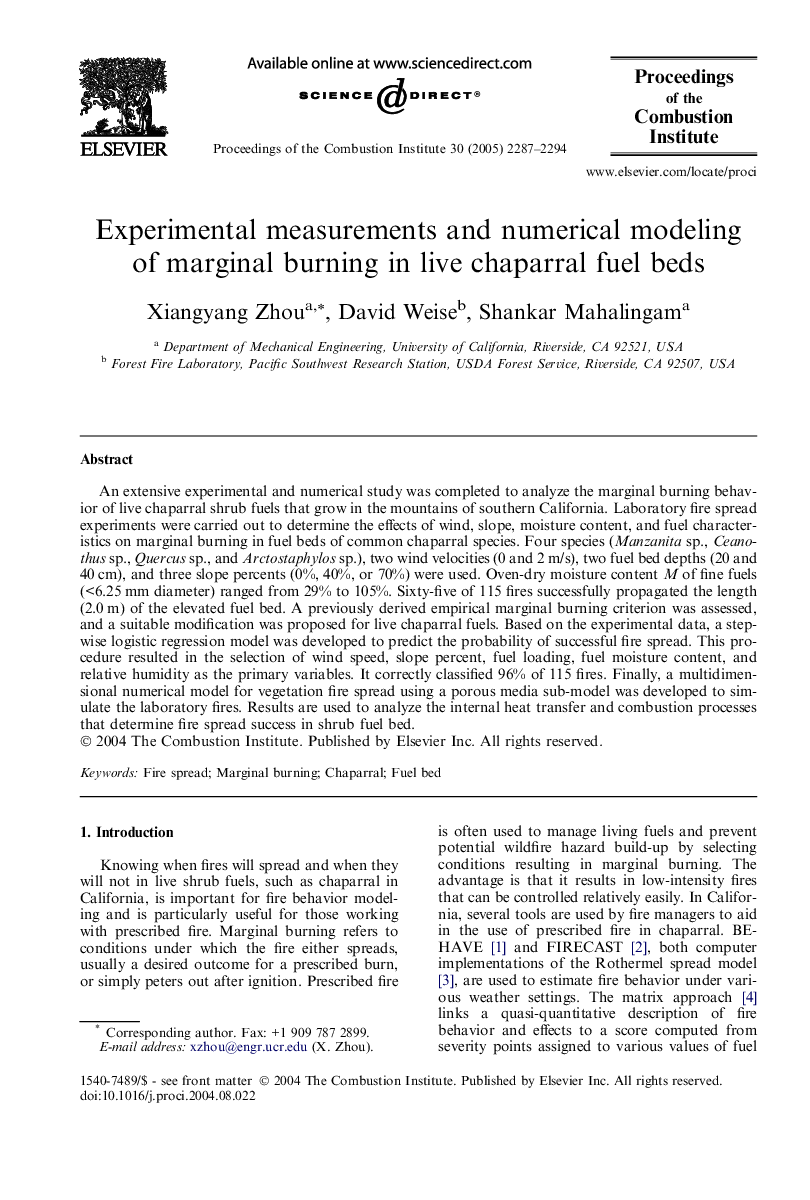| Article ID | Journal | Published Year | Pages | File Type |
|---|---|---|---|---|
| 240975 | Proceedings of the Combustion Institute | 2005 | 8 Pages |
An extensive experimental and numerical study was completed to analyze the marginal burning behavior of live chaparral shrub fuels that grow in the mountains of southern California. Laboratory fire spread experiments were carried out to determine the effects of wind, slope, moisture content, and fuel characteristics on marginal burning in fuel beds of common chaparral species. Four species (Manzanita sp., Ceanothus sp., Quercus sp., and Arctostaphylos sp.), two wind velocities (0 and 2 m/s), two fuel bed depths (20 and 40 cm), and three slope percents (0%, 40%, or 70%) were used. Oven-dry moisture content M of fine fuels (<6.25 mm diameter) ranged from 29% to 105%. Sixty-five of 115 fires successfully propagated the length (2.0 m) of the elevated fuel bed. A previously derived empirical marginal burning criterion was assessed, and a suitable modification was proposed for live chaparral fuels. Based on the experimental data, a stepwise logistic regression model was developed to predict the probability of successful fire spread. This procedure resulted in the selection of wind speed, slope percent, fuel loading, fuel moisture content, and relative humidity as the primary variables. It correctly classified 96% of 115 fires. Finally, a multidimensional numerical model for vegetation fire spread using a porous media sub-model was developed to simulate the laboratory fires. Results are used to analyze the internal heat transfer and combustion processes that determine fire spread success in shrub fuel bed.
